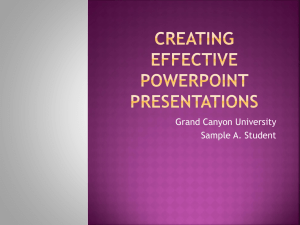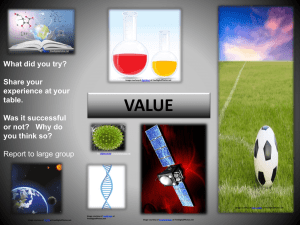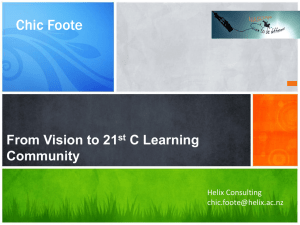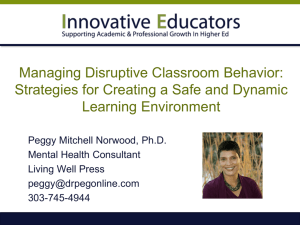CHALLENGE & EMOTION Image courtesy of at FreeDigitalPhotos.net FrameAngel
advertisement
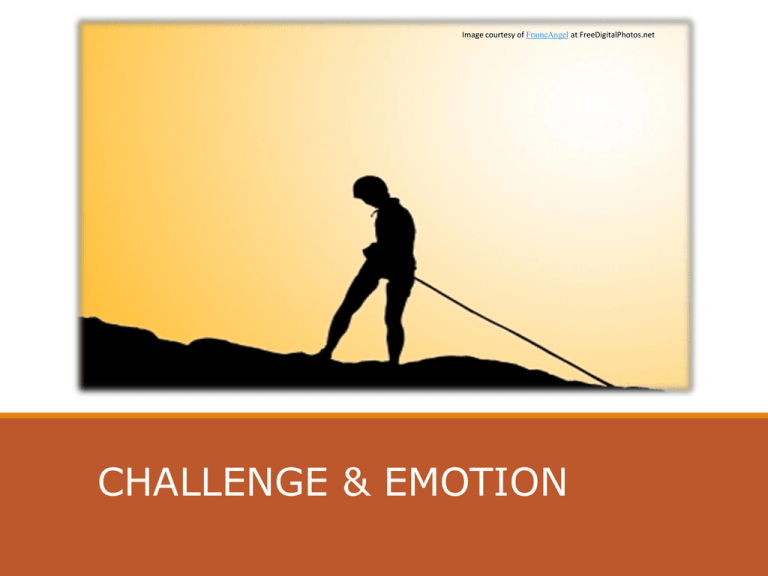
Image courtesy of FrameAngel at FreeDigitalPhotos.net CHALLENGE & EMOTION Share how it went. WHAT DID YOU TRY? © Nikolajs Strigins | Challenge: Findings Students thought science class was not challenging Many teachers perceived science as intimidating for students & made tasks easier. Moderate challenges are the most motivating and engaging and least anxiety provoking. Labs have great potential to promote challenge, but emphasis was on mechanical procedures. Students with a growth mindset view challenges as opportunities to learn and increase their ability. Males engage and girls disengage when challenged during science class. Image courtesy of Vlado at FreeDigitalPhotos.net Discussion You are doing something where your skills have become so secondnature that everything seems to come to you naturally. Your concentration is so intense that you sometimes lose track of time. Does this ever happen to you? What kinds of things give you this feeling? Describe how you feel during these times, and whether or not you have any control of making this happen? Do you ever see this in your students? Challenge is Motivating FLOW: Optimal challenge is thought to be deeply engaging and essential for both personal growth, problem solving, and (for more advanced students) the development of interest Image courtesy of imagerymajestic at freeDigitalPhotos.net The flow Experience Intense concentration on the task at hand Merging of action & awareness Sense of control over one’s actions to deal with task at hand Positive affect: Enjoyment or interest in activity Distorted sense of time Conditions for flow Perceived challenges are high and in balance with perceived skills Clear proximal goals regarded as important Immediate feedback Control is possible Focused, rather than divided attention Practical Suggestions Challenge Monitor students challenge Provide “low cost” (in terms of grades) challenges. Use role models who talk about challenge and “flow” Provide challenges for many activities so students can chose to take on challenge in area they feel most skilled. Treat mistakes as challenges AND chance to learn Differentiate (discuss barriers & opportunities) Remember that challenge is motivating rather than intimidating. Talk about challenge as exciting EMOTION in the Science Classroom Image courtesy of imagerymajestic at freeDigitalPhotos.net Emotion Image courtesy of Idea go at freeDigitalPhotos.net Learning activities that were more enjoyable were perceived as less relevant! Emotions varied through subject area; physics has the highest stress and enjoyment and chemistry the lowest. Male students reported having more pleasure and less stress in science class than female students. Test anxiety put students at a disadvantage. The ultimate result of anxiety and related underperformance in science is students avoiding science-related careers. Anxiety can be reduce by promoting positive and enjoyable experiences. Image courtesy of ponsulak at freeDigitalPhotos.net Anxiety SCIENCE ANXIETY TEST ANXIETY Image courtesy of David Castillo Dominici at freeDigitalPhotos.net

